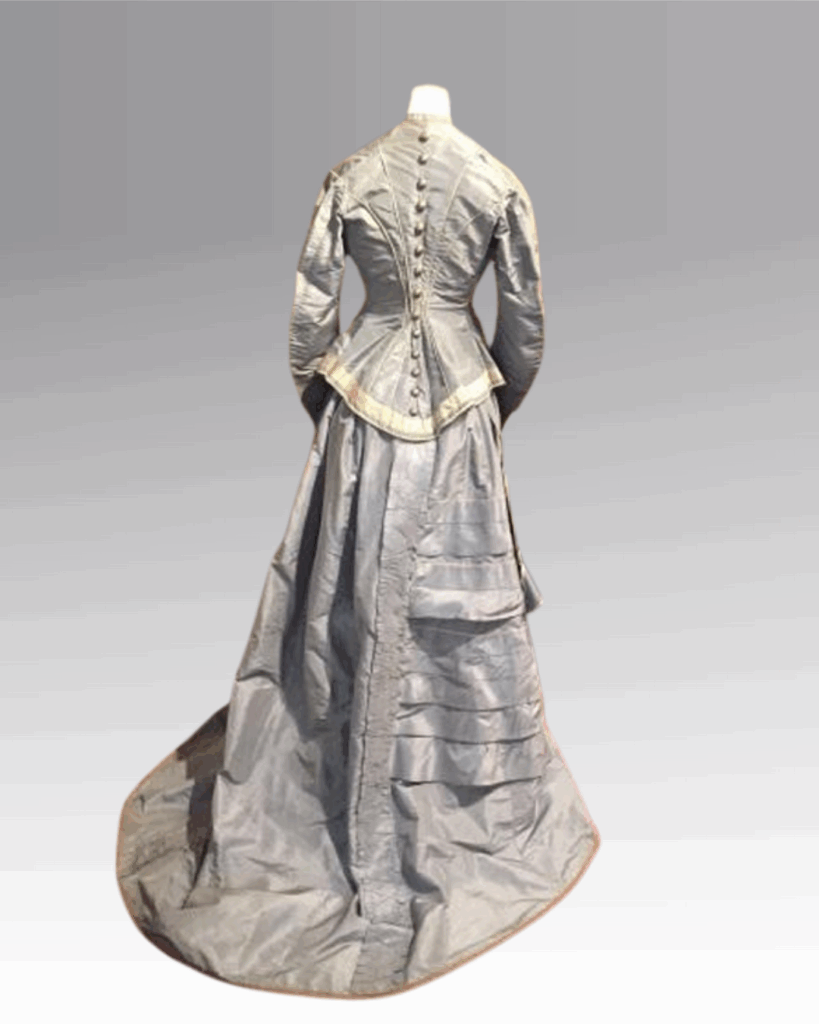
Wedding Dress, 1877
-
What were Marion Whitelaw Crickett’s thoughts in August 1877 as she walked down the aisle in this beautifully tailored wedding gown? She was about to marry Pukerimu farmer Robert Fisher, who was well on his way to becoming an influential member of the Cambridge community. If Marion hoped for a long and successful marriage, she was quite justified. She and Robert were married for almost fifty years and died within three years of each other.
The Grey Taffeta Wedding Dress
This fully-lined grey taffeta bodice and full-length skirt is trimmed with piping, pleats, tucks and ruching. The craftsmanship blends precise machine stitching made possible by the relatively recent invention of the domestic sewing machine just two decades earlier and meticulous hand-finishing by a skilled seamstress.
The fashionable silhouette of the 1870s and 1880s was an elongated bodice, a narrow waist, and dramatic volume concentrated at the back of the skirt. The bustle played a crucial role in achieving this effect. Worn under the skirt at the back, it acted as a framework that lifted and supported layers of gathered fabric, ruffles, and drapery. Marion probably wore one in the form of a small cushion, but she may have had a more intricate construction of wire and fabric, designed to collapse as she sat down. This not only shaped the desired silhouette but also showcased the rich decoration on the back of gown.
In the 1870s, it was not uncommon for brides to choose gowns in practical colours like grey, brown, or deep blue, rather than white. These colours made the garments suitable for reuse after the wedding. This was especially important at a time when clothing was a significant investment. Grey, in particular, conveyed elegance and modesty while offering versatility for future formal occasions.
This dress offers a fascinating insight into the fashion and social customs in Cambridge when it was an up and coming small rural market town. With its refined detailing and structured form, it exemplifies the ideals of feminine beauty and propriety in the 1870s, while also telling a story of resourcefulness and changing technology in the way garments were made.
- Accession Number: CM2000
- When: 1877
- Materials: Taffeta, metal
- Measurements: Bodice 65cm, Skirt 144cm
Read more about Marion and Robert Fisher in Cambridge Historical Society Newsletter, Feb 1918, p 2
External Links:
- Bustles in the 1870s and 1880s: https://fashionhistory.fitnyc.edu/bustle/
